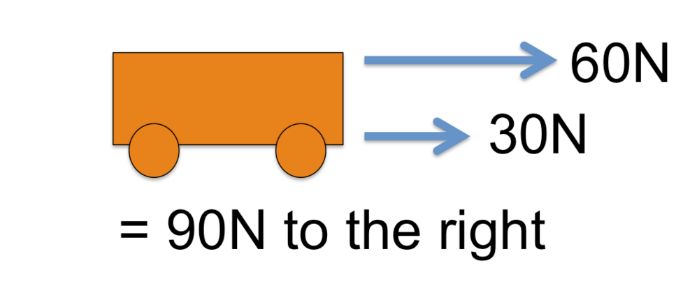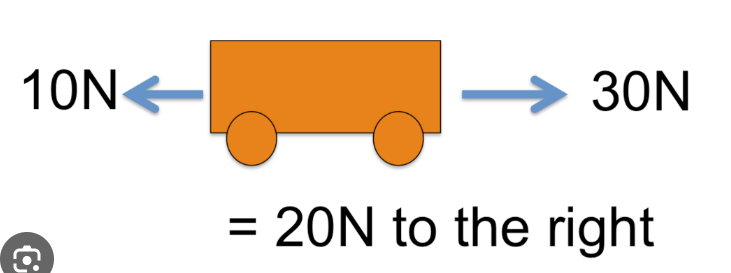Composition of Forces - Oct 30th 2024
When two or more forces act at the same point on an object, they are said to be concurrent forces. Two such forces produce a combined effect, call Resultant [R]
Resultant Force
The resultant is defined as a single force, that of substituted for the two concurrent forces will produce the same effect. In both magnitude and direction.
Equilibrant
Two concurrent forces can always be balanced by a third force called an equilibrant. The equilibrant is a force equal in value to the resultant, but opposite in direction to it.
Two concurrent forces may act on an object in 3 different ways
The Forces acting in the same direction (0 degrees to each other).
In this case, the magnitude of the resultant is equal to the sum of the magnitude of the two forces and acts in the same direction as the two forces.

The forces act in opposite directions (at 180 degrees to each other.
In this case, the magnitude of the resultant is equal to the difference in the magnitude of the two forces and acts in the direction of the larger force

When two forces act at an angle between 0 degrees and 180 degrees.
If the two forces act at an angle the resultant may be found by the parallelogram Law method. In this method, the two forces are represented on a scale at the angle indicated in the problem. The parallelogram is completed and the diagonal in between the two forces (the resultant) is drawn. The direction of the diagonal is the direction of the resultant from the length of the diagonal by means of a scale. If the diagonal is extended the same length in the opposite direction the equilibrant is obtained.